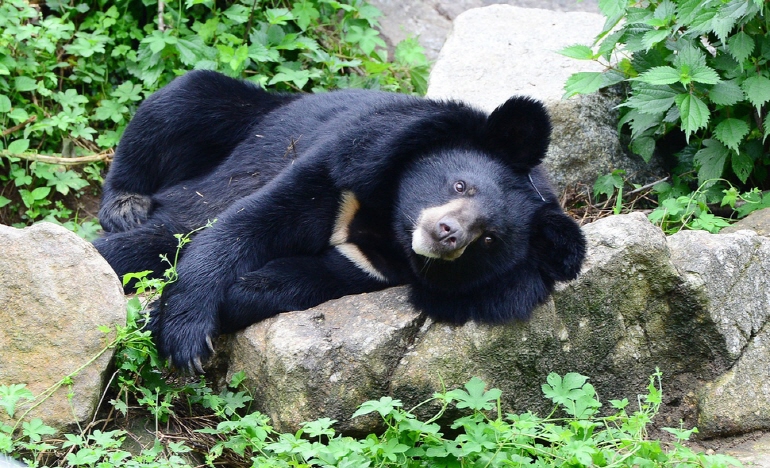SEJONG, May 3 (Korea Bizwire) — The paradigm to restore the population of the endangered Asiatic black bear (also known as the Asian black bear) is to shift from merely being population-centric to a system that focuses on expanding the habitat of the rare species.
The revised model will enable bears to better coexist with the local human population.
This is according to plans revealed by the Ministry of Environment on Wednesday that focus on policy change to reflect the rising population of Asian black bears previously released into the wild around Jirisan, the tallest mountain in mainland South Korea.
The bears are currently classified as endangered wildlife Class I. The country’s endangered wildlife is designated as Class I or Class II depending on the degree of endangerment.
After the release of the first batch of the bears in 2004, there are now 56 living in the wild, surpassing the minimum self-sustaining number of 50.
Taking into consideration the birthrate and life span of the “moon bears”, as they are affectionately known, the number is expected to exceed 100 by 2027. If the bear population surpasses 78, the maximum capacity of Jirisan, a new habitat must be provided for them.
In actuality, the rise of the bear population led to the relocation of some of the animals to other regions outside of Jirisan, such as Gwangyang, Gokseong and Gimcheon.
This year, the Ministry plans to constitute a committee to promote discussion on how humans can coexist with moon bears. The committee will include individuals from five provinces and 17 cities and counties where the bears have lived or are expected to relocate to.
The committee will also include experts and members of civil society in addition to national park officials. In line with such efforts, the Ministry also plans to restore the ecosystem of the Baedudaegan mountain range to support the bears’ activities and distribution of population.
In addition, relevant government agencies will work together so that access to hiking or walking trails is restricted when the bears are giving birth to cubs or are being relocated.
Kim Eun-kyung, the Minister of Environment, reflected such efforts, stating that “the public, civic society and government agencies must work together so that the moon bears can safely prosper in the wild.”
M. H. Lee (mhlee@koreabizwire.com)








Sharing a life without killing animals and protecting the bears